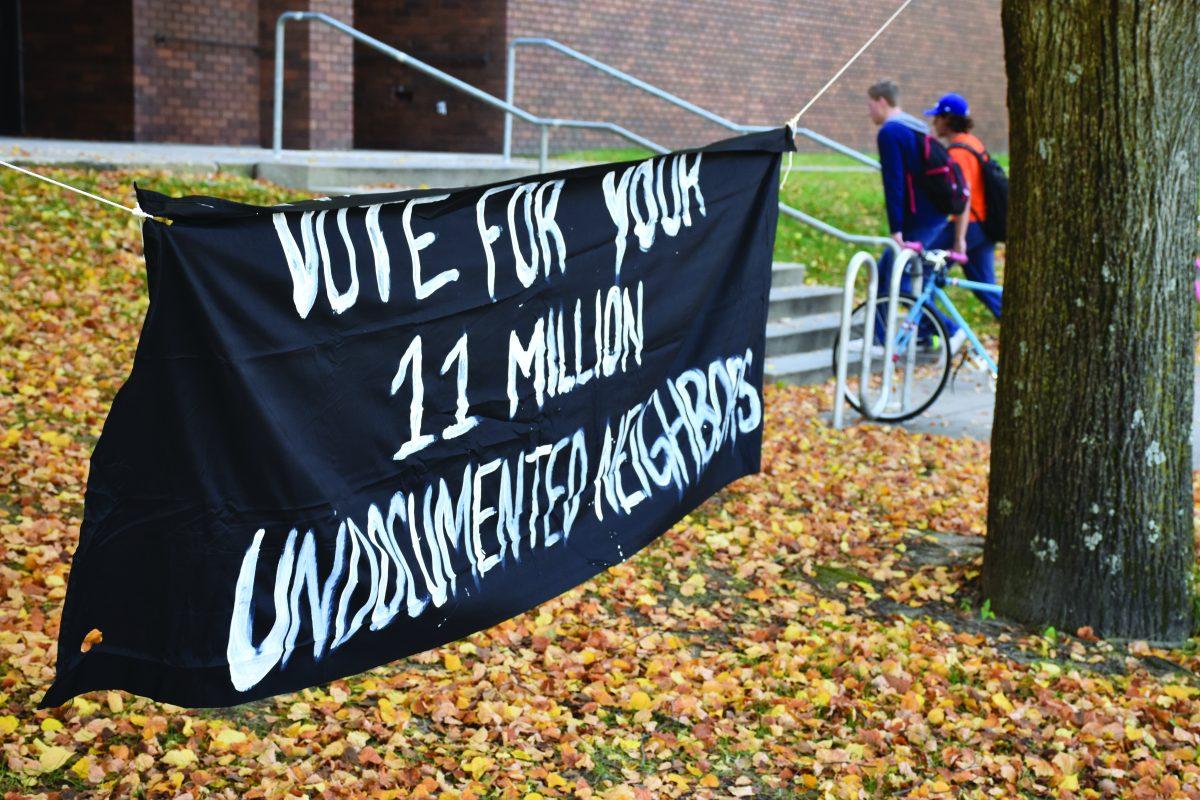KATHERINE BAUER
With a brief sentence, Drake President Marty Martin accepted the Faculty Senate resolution to make Drake University’s campus a sanctuary for undocumented immigrants. Drake is one of five sanctuary campuses in America and is the first in the Midwest.
“I accept this resolution as President of Drake University and commit the institution to doing what it can lawfully do to meet the expectations created by the spirit of this Faculty Senate action,” Martin declared in an email sent to faculty, staff and students last week.
Faculty Senate proposed the idea of becoming a sanctuary campus after the tumultuous election of Donald Trump. The president-elect ran on a platform that included the deportation of undocumented immigrants.
The Faculty Senate resolution had asked the Drake administration to make its campus a place of refuge where undocumented immigrants, primarily Drake students, could be safe from “unfair deportation, investigation, or other intimidation based on their immigration status.”
A number of undocumented students attend Drake through the Deferred Action for Childhood Arrivals (DACA) policy signed by President Obama in 2012. In order to do so, they disclosed their undocumented status to the government in exchange for permission to live, work or study in the United States, protected from deportation. If Trump holds true to his campaign promises, this status could be threatened.
“I think I’ve worried about (DACA being revoked) since it was enacted, just because it is an executive order,” said first-year Jose Garcia, one of 700,000 undocumented students protected by DACA, according to a NBC News article published in June. “It’s super easy to repeal. But now, I think it’s going to be a lot easier. I know president-elect Trump has talked about revoking it.”
Now, deportation seems inevitable for Garcia.
“I personally don’t think it’s speculation,” the law, politics and society and international relations double major said. “That fear always lingers in my mind, that fear of deportation and safety for myself and for my family.”
Garcia fears that DACA students like himself will be an easy demographic to find and deport.
“Undocumented students across the country registered with DACA in good faith and now fear that their registration as ‘Dreamers’ under this policy would make them especially vulnerable to deportation,” said Debra DeLaet, a co-sponsor of the resolution.
Garcia explained that the federal government has an immense amount of information about him, including where he has resided in the past 10 years and where he attends school.
Within a matter of weeks after the election, Faculty Senate had already written and passed the resolution.
“I have received many messages from faculty, students and alumni in support of this initiative,” DeLaet said. “I also have had productive conversations with students who have shared questions and reservations about the resolution.”
Leading up to Faculty Senate’s vote on the resolution, a Google Doc of the resolution circulated through social media. Students were able to review the proposal as well as sign it electronically.
Nearly 170 current students signed the resolution, in addition to alumni and other staff not involved in Faculty Senate.
Faculty Senate met on Nov. 16. During that meeting, the Senate made the final amendments to the resolution before voting. 13 members voted in favor. One voted against the motion while five abstained.
The resolution moved on to Drake administration. Provost Sue Mattison acknowledged the resolution before Thanksgiving Break.
“President Martin, all of the members of President’s Council, and I recognize (the resolution) is a call to action,” Mattison said in a campus-wide email. “We stand in support with students, faculty, and staff, consistent with our foundational Statement of Principles.”
Administration did not present any new information to campus throughout break and the week afterwards.
“We wanted to know more, to get a sense of the issues that the resolution hoped to address,” said Venessa Macro, the chief administration officer. “We were aware of the Immigration and Customs Enforcement (ICE) memorandum of Oct. 24, 2011 making it an ICE policy not to engage in certain enforcement activity at schools, including searches and arrests.”
Administration was able to consult legal and advocacy resources to research sanctuary status and the legalities of the motion. Macro noted that Faculty Senate had done a “good deal of research, providing helpful background information.”
“This process has helped us to clarify our role and the ways in which we can lawfully advocate for and support students,” Macro said.
Drake also consulted with some of the undocumented students on campus.
“Drake has done a great job in supporting us and needs to continue moving that forward,” Garcia said. “I’ve always thought something like this should have been done way before this situation emerged.”
Then the email came from President Martin on Nov. 30.
Martin noted that Drake “will not act on behalf of government agents to enforce immigration laws for the purpose of facilitating deportations.” In extension, Drake committed itself to taking steps to protect the privacy and records of students, including citizenship status.
Student Senate also passed a motion on Dec. 1 to show their support of the resolution for Drake to become a sanctuary campus.
The motion read, in part:
“We… in an effort to show our support and solidarity with undocumented students on campus, express our unequivocal affirtmation for Faculty Senate’s recommendation to push Drake University to become a sanctuary campus for undocumented students.”
The motion passed unanimously.
Garcia said the sanctuary status gives him some sense of security.
“It comes with a lot of peace of mind from the administration and faculty,” Garcia said. “It’s just Drake doing what would be considered doing the right thing.”







